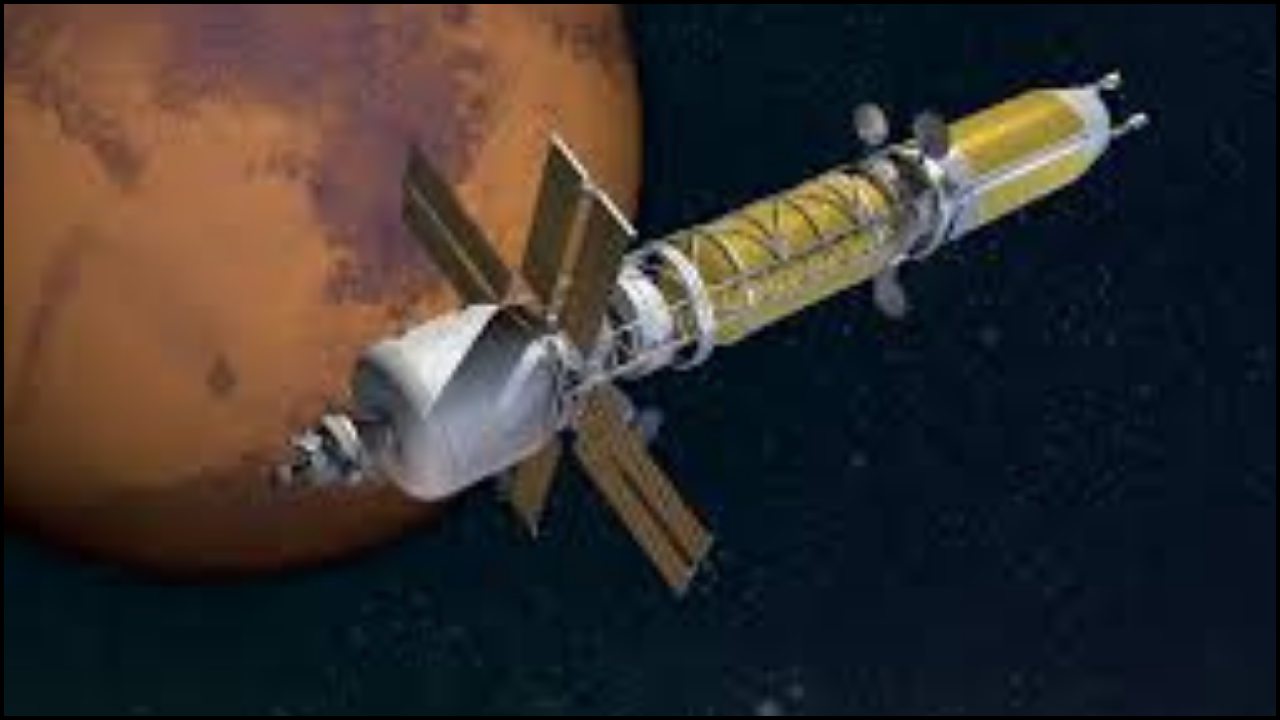The human dream of exploring the solar system and beyond is continually challenged by the immense distances and time frames involved. Traditional chemical rockets, while powerful, are limited by their low exhaust velocities and the need to carry vast amounts of propellant, making long-duration deep-space missions slow and inefficient. This fundamental limitation has spurred intense interest in advanced propulsion systems, with nuclear thermal engines emerging as a highly promising solution. These cutting-edge nuclear engines could revolutionize space travel, drastically reducing transit times and opening up unprecedented possibilities for space exploration.

What is Nuclear Thermal Engines?
At its core, a nuclear thermal engine operates on a simple, yet incredibly powerful principle: using the heat generated by a nuclear fission reactor to superheat a propellant, typically hydrogen, and then expel it through a nozzle to create thrust. This differs significantly from chemical rockets, which generate thrust by burning propellants.

How Does Nuclear Thermal Engine Work?
Here's a breakdown of how nuclear thermal engines work:
1. Nuclear Reactor
The heart of a nuclear thermal engine is a small, compact nuclear fission reactor. This reactor contains solid fuel elements, often made of uranium or other fissionable materials, designed to operate at extremely high temperatures.
2. Propellant Heating
A liquid propellant, most commonly hydrogen, is pumped from storage tanks into the reactor core. Hydrogen is chosen for its low molecular weight, which, when heated to extreme temperatures, results in a very high exhaust velocity.
3. Heat Exchange
As the hydrogen flows through channels in the hot reactor core, it absorbs tremendous amounts of thermal energy from the fission process. The temperatures involved are far beyond what chemical reactions can achieve.
4. Nozzle Expansion
The superheated, high-pressure hydrogen gas then expands rapidly through a nozzle, converting its thermal energy into kinetic energy. This expulsion of high-velocity gas generates thrust, propelling the spacecraft forward.
Advantage of Nuclear Thermal Engines
The key advantage of nuclear thermal engines lies in their much higher specific impulse (Isp) compared to chemical rockets. Specific impulse is a measure of engine efficiency, indicating how much thrust is generated per unit of propellant consumed over time. While chemical rockets typically have an Isp of around 450-500 seconds, nuclear thermal engines can achieve an Isp of 800-1000 seconds or more. This means they can generate the same amount of thrust with significantly less propellant, or achieve much higher speeds with the same amount of propellant, making them ideal for long-duration space travel. This increased efficiency is a critical aspect of next-generation space propulsion.
The Role of Nuclear Thermal Engines in Future Space Travel
The implications of nuclear thermal engines in space travel are profound, promising to transform our approach to interplanetary missions:
1. Faster Transit Times
The higher specific impulse of nuclear engines allows spacecraft to accelerate to much greater velocities, dramatically cutting down travel times to distant destinations like Mars. A journey to Mars that might take six to nine months with chemical propulsion could be reduced to just three to four months with nuclear thermal propulsion. This not only makes missions more feasible but also reduces the crew's exposure to radiation and the psychological stresses of prolonged space travel.
2. Increased Payload Capacity
By requiring less propellant, these engines free up significant mass for scientific instruments, life support systems, or even larger habitats, enhancing the capabilities of deep-space missions.
3. Enhanced Mission Flexibility
Faster transit times and greater payload capacity provide more flexibility for mission design, allowing for larger exploration teams, more extensive scientific experiments, or even shorter windows for return journeys.
4. Gateway to the Outer Solar System
The efficiency of nuclear engines could make routine missions to the asteroid belt, Jupiter's moons, or even Saturn and beyond a more realistic prospect, opening up the entire solar system for extensive space exploration.
3 Key Players in Nuclear Thermal Space Tech
Global space tech organizations are actively investing in and researching nuclear engines and related nuclear space tech.
1. NASA
The US National Aeronautics and Space Administration has a long history with nuclear space tech, dating back to the Rover and NERVA (Nuclear Engine for Rocket Vehicle Application) programs in the 1950s and 60s. These programs successfully demonstrated the feasibility of nuclear thermal engines. Today, NASA is renewing its focus on this technology through initiatives like the Demonstration Rocket for Agile Cislunar Operations (DRACO) program, in partnership with DARPA. The goal is to demonstrate a nuclear thermal rocket engine in orbit by the late 2020s, a critical step towards crewed missions to Mars. This represents a significant push in US space research.

2. SpaceXUS (Hypothetical Involvement)
While SpaceX currently focuses on reusable chemical propulsion (Starship), their long-term vision for extensive lunar and Martian colonization would eventually benefit immensely from advanced propulsion. It's plausible that as SpaceXUS pushes the boundaries of human presence in space, they would either develop or adopt highly efficient nuclear engines for their interplanetary transport systems, further solidifying the US's leadership in space tech. While you cannot literally “buy nuclear engines for space” off the shelf, private companies like SpaceX could contract or develop such technologies if they become commercially viable.

3. UK Space Technology
The UK space technology sector, while perhaps not leading in large-scale nuclear propulsion development like the US, contributes significantly to related areas. This includes expertise in advanced materials, robotics for hazardous environments (relevant to nuclear reactor handling and assembly), and novel manufacturing techniques that could support the construction of complex space propulsion systems. UK space technology also plays a role in regulatory frameworks and safety standards for space operations, which would be crucial for any future nuclear mission.
International Collaborations in Future Nuclear Thermal Space Tech
Given the complexity and cost of developing nuclear thermal engines, future scientific progress in this area will likely involve international collaborations, sharing expertise and resources to advance space propulsion technology for the benefit of all humanity.
4 Major Challenges in Nuclear Thermal Engines
Despite their immense promise, the development and deployment of nuclear thermal engines in space travel face significant challenges:
1. Safety Concerns
Public perception and actual risks associated with nuclear materials and potential accidents are major hurdles. Rigorous safety protocols, robust shielding, and secure disposal strategies are paramount.
2. Cost and Complexity
Developing and testing these advanced nuclear engines is incredibly expensive and technically complex, requiring substantial investment in research and development.
3. Material Science
The extreme temperatures and radiation environments within a nuclear thermal engine demand advanced materials that can withstand these conditions, a continuous area of scientific research.
4. Regulatory Frameworks
Establishing international and national regulatory frameworks for the safe operation, launch, and decommissioning of nuclear-powered spacecraft is crucial.
Staying Current with Nuclear Space Propulsion
To follow nuclear space tech updates and stay abreast of space propulsion advancements, it's essential to monitor official NASA announcements, reports from defense and space agencies, and academic publications specializing in aerospace engineering and nuclear engineering. Conferences dedicated to space propulsion and advanced space tech also offer real-time insights.
Conclusion
In conclusion, nuclear thermal engines represent a critical leap forward in space propulsion, offering the efficiency and speed necessary to truly unlock the solar system for human exploration. While challenges related to safety, cost, and technology remain, the renewed commitment from organizations like NASA and the potential involvement of private space tech giants like SpaceXUS indicate a strong drive towards making nuclear thermal engines in space travel a reality. The future of space travel will undoubtedly be faster, more efficient, and more ambitious, thanks to the power of the atom.









